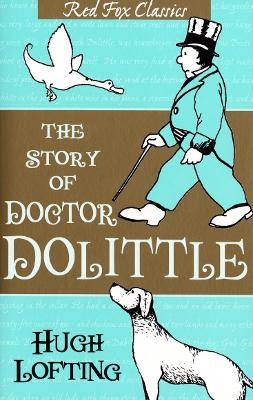
Amber (The Literary Phoenix)
Written on May 3, 2020
I’d read this one before, as a kid, but most my vague memories of the story come from the 1967 Doctor Dolittle film, so going into this against for the first time in, I don’t know, maybe twenty years? I felt like I was going in blind. I remembered Pollyana, of course, and I remembered the Pushmi-Pullyu, and the general concept of doctor-who-talks-to-animals… but that’s about it.
And the first thing I read, going in, was the foreward. I almost never read forewards on books, ebcause more the time it’s a sappy praising review which is all fine and good, but I’ve already got the book in my hands, you don’t have to sell it to me again. I’m not sure what possessed me to read it this time, but I’m glad I did, because I learned that the original version of The Story of Doctor Dolittle and it’s accompanying illustrations was super racist. … Eek! The foreward in my edition – the 1991 re-release with illustrations by Michael Hague – was a warning and an apology that the original text had been altered to rewrite a racist scene where an African prince wished to be white into something more sensitive. … um, yeah, you better get rid of that crap. I’m not sure how I had never heard about that being a thing with Doctor Dolittle before, but that is a THING so if you want to read the original book… read the 1991 version or later.
And that could lead into a WHOLE conversion about racism in classics and whether we should acknowledge, edit, or burn, but this is a book review and not a discussion post, so I’mma put that on my docket for later.
The Story of Doctor Dolittle reads relatively okay for a children’s book. For some reason I went in expecting closer to middle grade – I think the length of the book attributed here, 160 pages, a little long for a children’s book. The writing was extremely simple and the characters very basic and underwhelming. The language in the book mixed with the length probably lends it to a child who is advanced in reading schools, but maybe not ready for full-fledged middle grade novels. There’s nothing to really clasp on to in The Story of Doctor Dolittle – nothing magical about the book. Even with illustrations included, nothing made me fall in love with any of the characters or draw me into the world. Generally speaking, this book is 100% forgettable.
I think the only thing that really gives longevity to The Story of Doctor Dolittle is the central concept – a man who can speak to animals. We certainly see this in the film adaptations, where it’s the only real element that remains from the books (the 1967 version is a little closer to text than the 1998 or 2020 versions) and it’s a good character concept (although outside of that one thing, John Dolittle is lazy, pompous, and a bore). Generations of children may have loved the books for the menagerie they present, but the story and the man aren’t really worth praising in a book that remains a constant in many childrens’ libraries a century later.
Of course, I’m far out of the demographic for this one, but it was never a childhood favorite, either. I remember very little of The Story of Doctor Dolittle from when I was little – and this was the same edition I had growing up – so the lack of impression now is consistent about the feelings I had when I was a child.
My advice? The Story of Doctor Dolittle can be skipped, and doubly so because of the racist understones that have been edited out (and the industry never does that… so they must have been really bad). For maximum fun, watch the Eddie Murphy films, and that’ll do.
